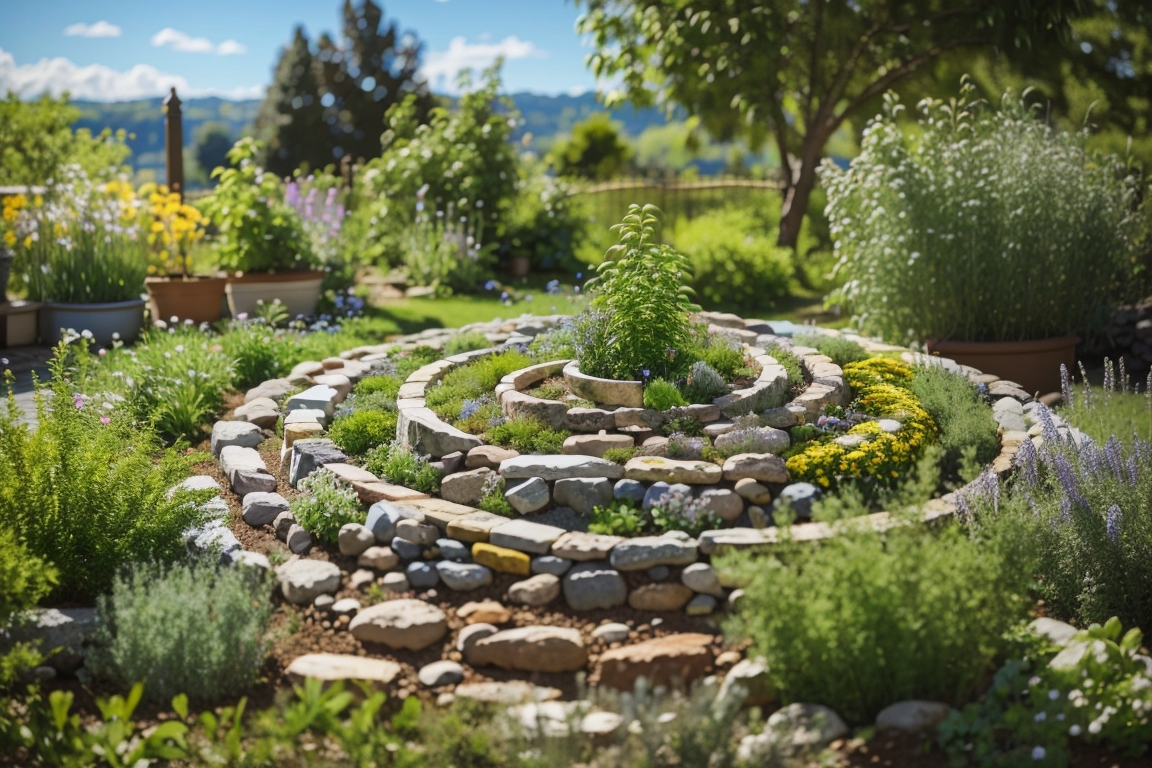Herbs have been part of human civilisation for thousands of years.
These aromatic plants not only add flavour and fragrance to our meals but can also be medicinal.
While you can easily purchase herbs from the shop, there’s something much more satisfying about growing your own in a herb garden, even in a limited space.
Herbs are great for small spaces as they tend to be fairly compact, especially with regular picking!
Small herb garden design ideas can include raised beds, herb spirals and vertical planting. You can use hanging baskets and tiered containers to create an attractive and functional display.
Selecting the Right Location
The first step in designing a small herb garden is choosing the perfect location.
Herbs thrive in specific conditions, and the right spot can make all the difference in their growth.
Here are some key factors to consider:
Sunlight
- Most herbs require plenty of sunlight, ideally at least 6 to 8 hours of direct sunlight per day.
- Select a location that receives lots of sunlight throughout the day, such as a south-facing spot in your garden.
- Arrange the taller herbs at the northern end of your space and smaller ones at the southern end, this way the sun reaches every one.
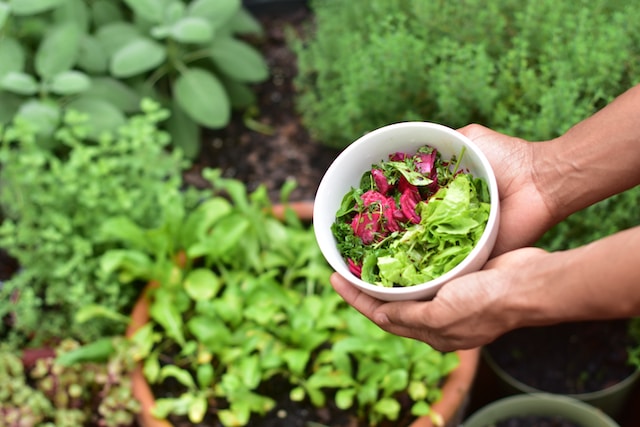
Soil Quality
- Herbs prefer well-draining soil that is rich in organic matter.
- Test your soil’s pH level and amend it if necessary to make sure it falls within the best range for herb growth.
Proximity to the Kitchen
- To make harvesting easier, consider placing your herb garden near the kitchen.
- This allows you to easily step outside and snip fresh herbs for every meal.
- You could have a window box on your kitchen window, or a hanging basket by the back door.
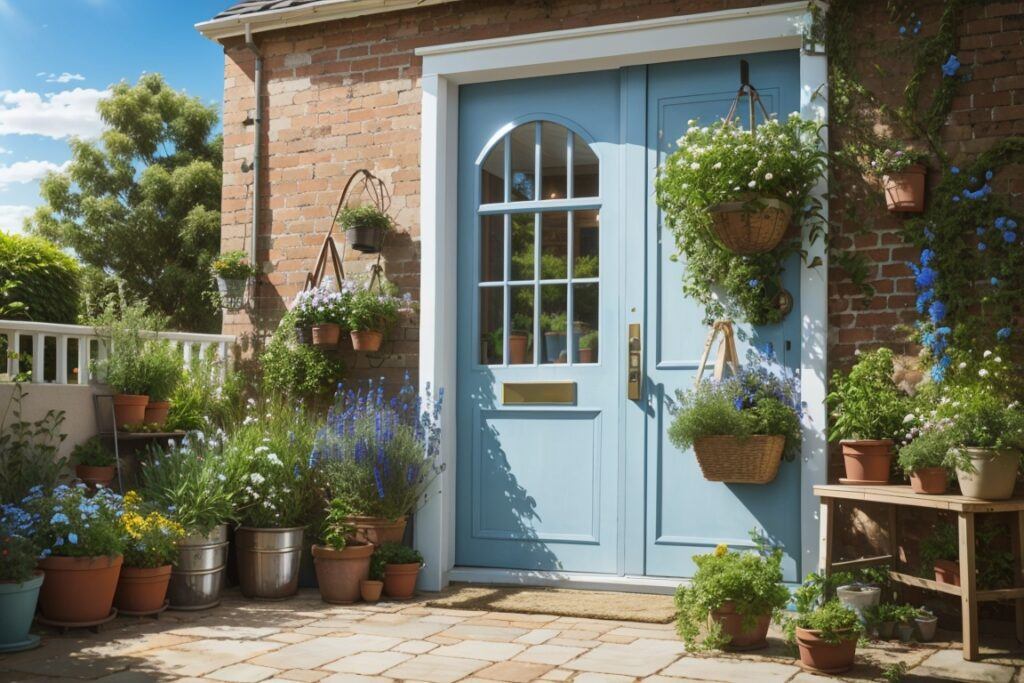
Space and Size
- Determine how much space you have available for your herb garden.
- When working with limited spaces this could be a small window box or a compact container garden.
Choosing the Right Herbs
Before diving into the design, decide which herbs you want to grow.
The selection of herbs will depend on what you like to eat, available space, and climate.
Here are some popular herbs to consider:
Basil: A versatile herb used in a variety of dishes, especially Italian cuisine.
Rosemary: Known for its strong, pine-like flavour, it’s great for roasting meats and potatoes. It can grow quite large however, so bear this in mind if you have limited space.
Thyme: A fragrant herb used in soups, stews, and as a seasoning for roasted vegetables.
Mint: Perfect for making refreshing drinks, teas, and desserts. It can take over a bit, so in a small space it will be best in pots.
Parsley: A great fresh tasting garnish and ingredient in many dishes, lovely with meat and fish.
Coriander/Cilantro: Essential in Mexican and Asian cuisine, it adds a fresh, citrus flavor.
Chives: These mild, onion-flavored herbs are great for garnishing dishes.
Sage: Lovely with chicken, in stuffing and Italian dishes.
Oregano: A staple in Italian and Mediterranean cuisine.
Dill: Great in pickles and with seafood.
Lavender: Often used in desserts and teas for its floral aroma and flavour.
Chervil: Adds a mild anise flavour and is a classic ingredient in French food.
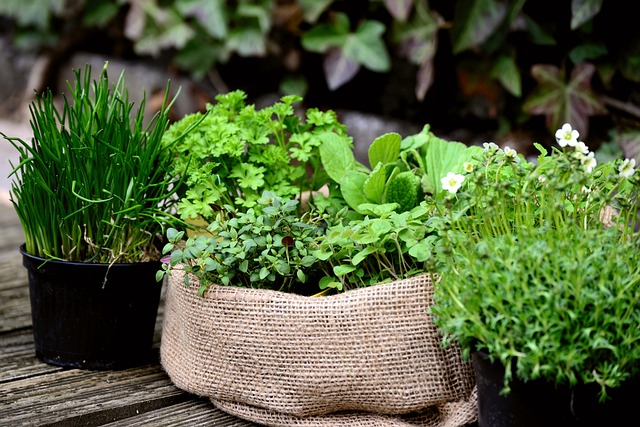
Design Ideas For Your Small Herb Garden
Now that you have your location and herb selection in mind, it’s time to design your herb garden!
The design should not only work well but also lovely to look at.
Make A Plan
- When you are dealing with limited space it is best to make a plan to make sure you are getting the absolute best out of your resources.
- It doesn’t need to be complicated, and you can always change anything that doesn’t work, but a plan will give you some structure and allow you to build the herb garden in logical steps.
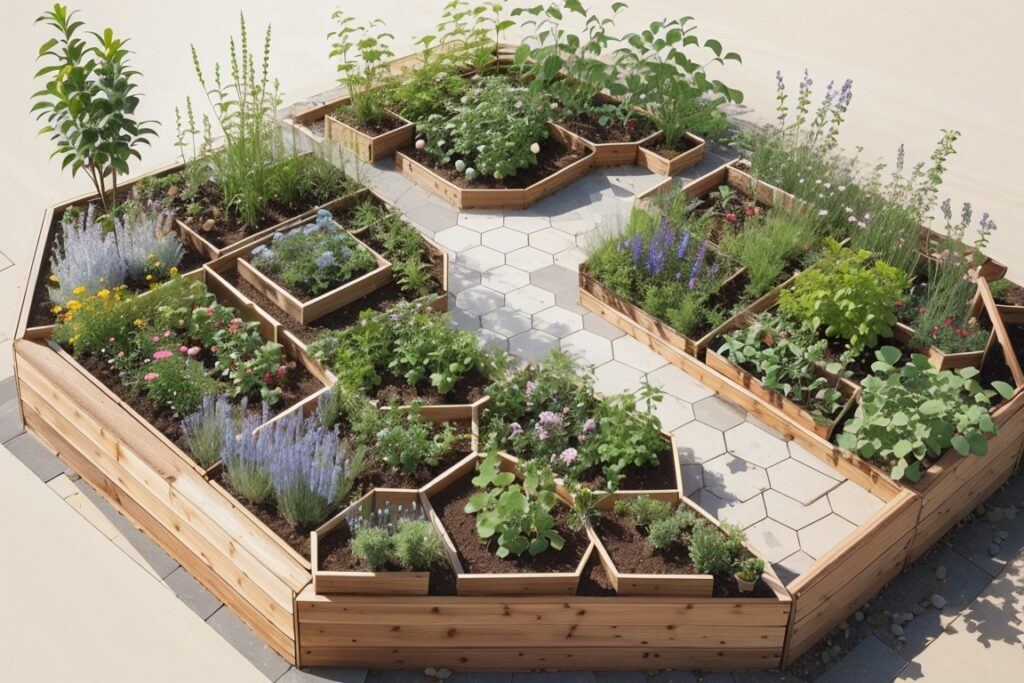
Traditional Raised Beds
- Create a rectangular or square raised bed using wood, bricks, or stones.
- This not only provides good drainage but also offers a defined space for each herb.
Container Garden
- If you have limited space or want the flexibility to move your herbs around, consider planting them in containers or pots.
- You can place these on a balcony, patio, or windowsill.
Herb Spiral
- A herb spiral is a great design that makes the most of limited space.
- It consists of a spiral-shaped mound of soil with herbs planted at different levels to maximise sunlight exposure.
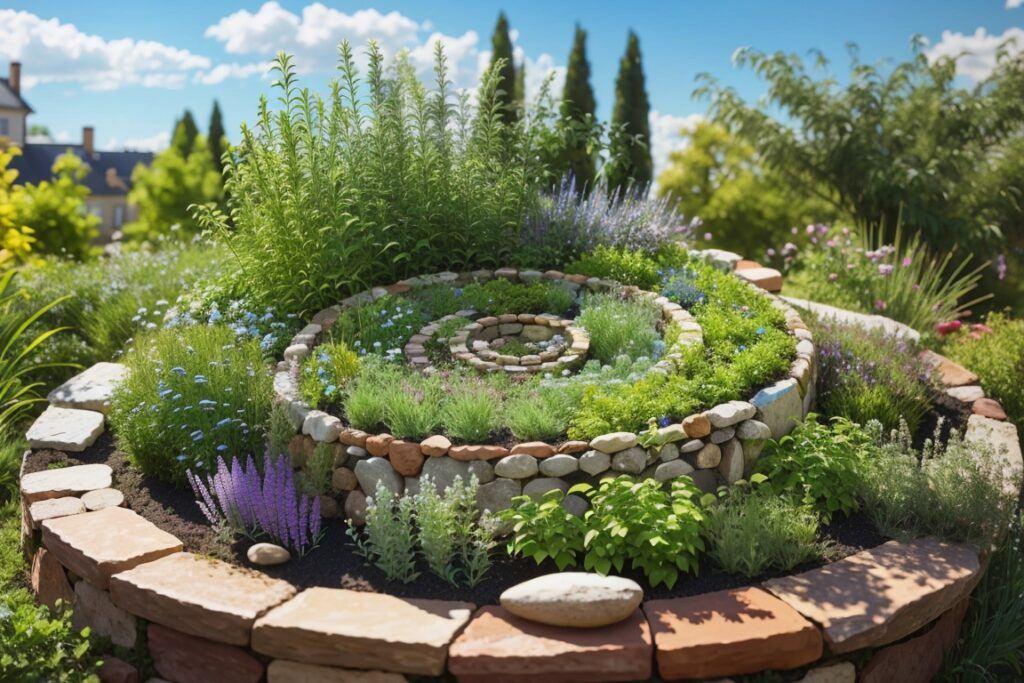
Companion Planting
- Consider companion planting to enhance the growth of your herbs.
- For instance, plant basil near tomatoes as they complement each other in the garden and in dishes.
- This can work the other way – ie dill and carrots do not like each other.
Vertical Garden
- Utilise vertical space by growing herbs on a trellis, wall-mounted planters, or a pallet garden.
- This is an excellent option for small gardens or urban settings.
- You can also use hanging baskets or tiered planters.
- Cascading plants like trailing rosemary are perfect for this.
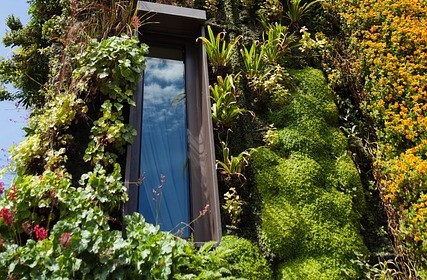
Colour and Texture
- Arrange your herbs in a way that creates a visually appealing garden.
- Mix herbs with different foliage colours and textures for a vibrant display.
Preparing the Soil
Preparing the soil is a critical step in creating a successful culinary herb garden. Here’s what you need to do:
Soil Testing
- You can get your soil tested to determine its pH level and nutrient content.
- Most herbs prefer a slightly acidic to neutral pH (around 6.0 to 7.0).
- Usually if you have sandy or peaty soil, it will be slightly acidic.
- If your soil is clay or chalky, it will be more alkaline.
- We have a great guide here for determining what grows well in different soils.
Amending the Soil
- Based on the soil test results, amend your soil either with organic matter like compost to improve its fertility and structure, or grit and sand to improve drainage.
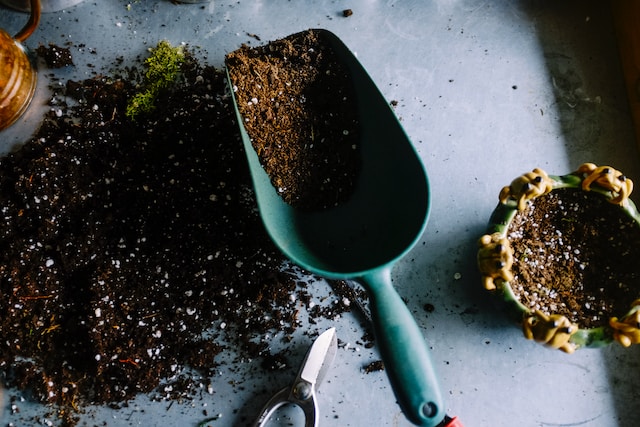
Drainage
- Most herbs prefer free draining soil so if your soils is heavy and prone to compacting, add in some stones, grit or sand. Think Mediterranean and you can’t go far wrong.
- Ensure that any containers have lots of decent sized holes to allow the water to drain out.
- This will prevent waterlogging, which will cause herb roots to rot.
Mulching
- Apply a layer of mulch to help retain moisture and regulate soil temperature.
Planting Your Herbs
Once your soil is ready, it’s time to plant your herbs. Follow these general guidelines:
Spacing: Plant herbs at the recommended spacing for each variety. This prevents overcrowding and allows air circulation.
Planting Depth: Follow the instructions on the herb seed packet or transplant tag for the correct planting depth.
Watering: Water your herbs thoroughly after planting. Afterward, water them regularly but avoid overwatering, as most herbs prefer slightly drier conditions.
Fertilising: Herbs generally don’t require heavy fertilisation. If necessary you can use a balanced, slow-release fertiliser sparingly.
Mulch: Apply mulch around the base of your herbs to help retain moisture, reduce weeds, and regulate soil temperature.
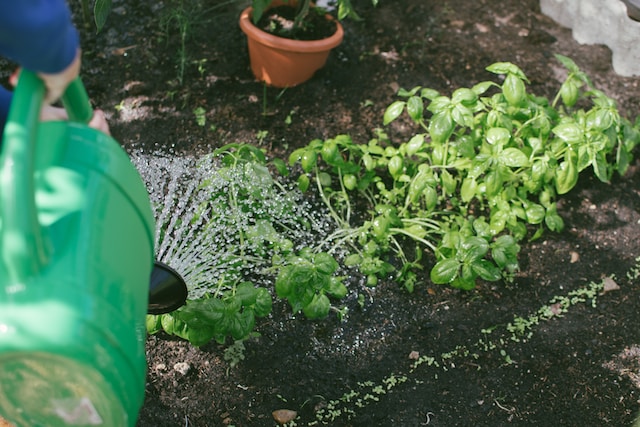
Maintenance and Care
Maintaining your herb garden is essential for its long-term success.
Here are some care tips:
Regular Pruning: Prune your herbs to encourage bushier growth and prevent them from becoming leggy. Harvesting also promotes fresh growth.
Watering: Keep a consistent watering schedule, but avoid waterlogged soil. Herbs like basil and mint may need more frequent watering than rosemary or thyme.
Pest and Disease Control: Inspect your herbs regularly for signs of pests or diseases. Use organic methods like neem oil or companion planting to deter pests.
Harvesting: Harvest herbs when they are at their peak. Pinch or snip leaves or stems, depending on the herb type.
Winter Protection: In cold climates, consider moving potted herbs indoors during the winter or providing protective coverings to extend their growing season.
Dividing and Propagating: Some herbs benefit from dividing or propagating to maintain their vitality. This is also a great way to get more plants for free! This is usually done in early spring or late summer.
Enjoying Your Homegrown Herbs
As your culinary herb garden flourishes, you’ll have a steady supply of fresh herbs to enhance your cooking. Here are some ways to savour the fruits of your labour:
Cooking: Use your homegrown herbs in a variety of dishes. Whether you’re making pasta sauces, soups, salads, or marinades, fresh herbs can elevate the flavour of your meals.
Herb-Infused Oils and Vinegars: Create your own herb-infused oils and vinegars for an extra burst of flavour. Simply place fresh herbs in a clean, dry bottle, fill with oil or vinegar, and let it infuse for a few weeks.
Herbal Teas: Many herbs like mint, chamomile, and lavender can be used to make soothing herbal teas. Dry the leaves or flowers, then steep in hot water.
Preservation: Preserve your herbs by drying, freezing, or making herb butter or pesto. These methods allow you to enjoy your herbs even during the off-season.
Gifts: Share the bounty of your herb garden by giving homemade herb-infused products or fresh herbs as gifts to friends and family.
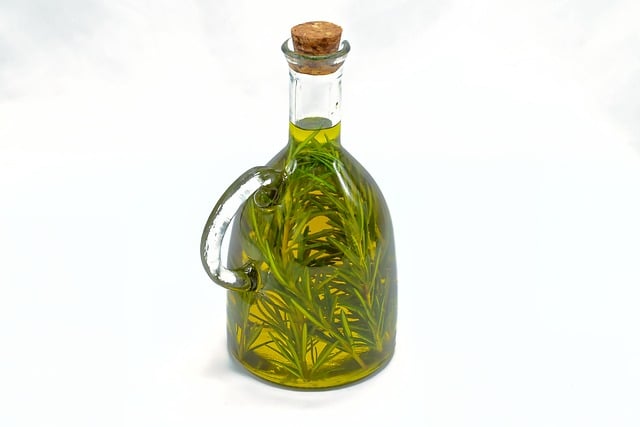
Conclusion
Creating a herb garden is a rewarding project that will improve your culinary skills and connect you with nature.
Even if you only have a small space to work with, herbs can fit into any design.
From simple window boxes and hanging baskets to raised beds and herb spirals, the possibilities for designing your small herb garden are only limited by your imagination.
Check out our article on The 10 Easiest Herbs To Grow to start you off.

